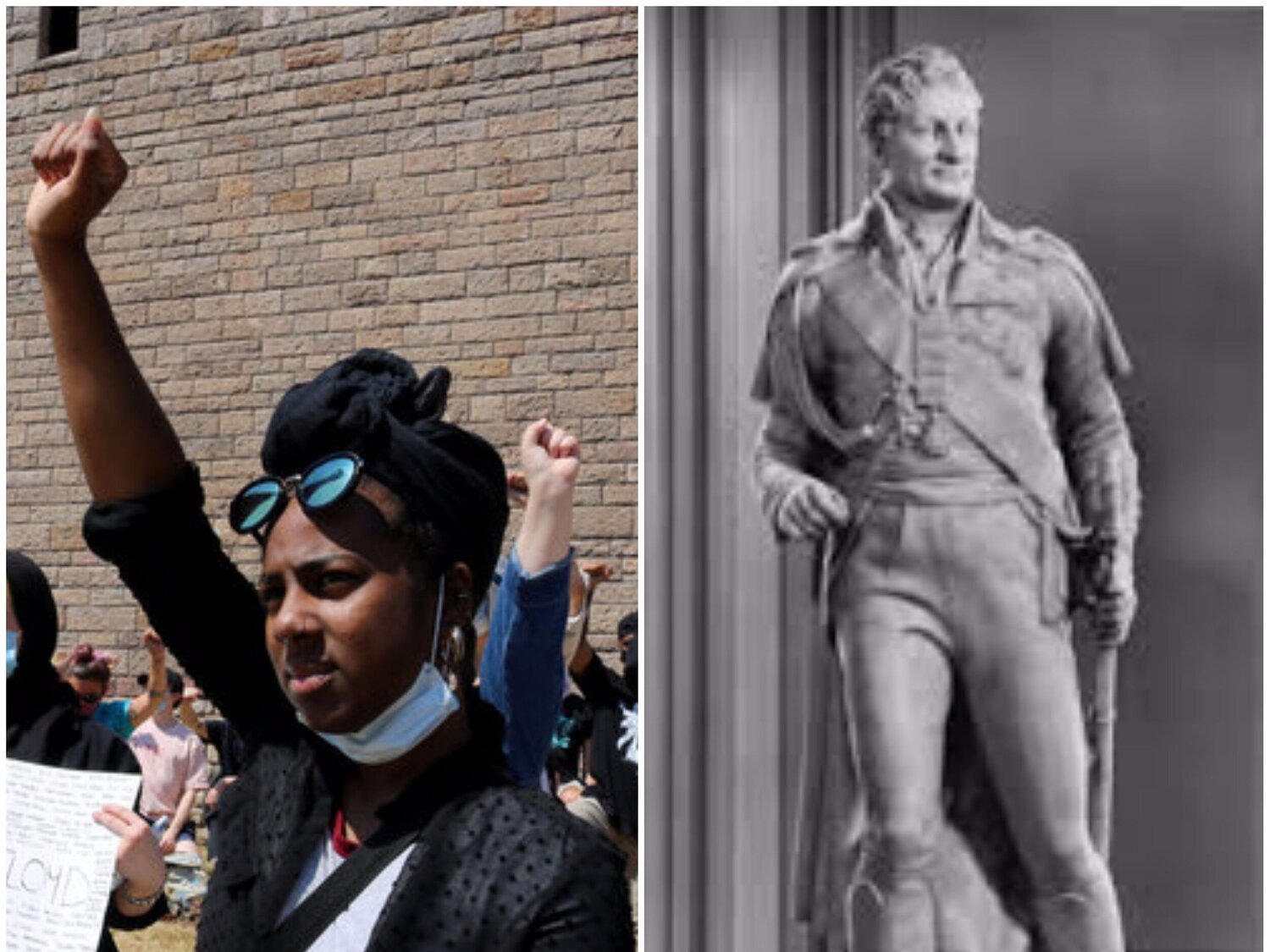
Thomas Picton: Cardiff Council Votes to Tear Down Statue of Colonial Murderer
By SC Cook and Mark Redfern
History was made in Cardiff today as the city’s councillors voted to tear down the statue of the colonialist figure of Thomas Picton, which has stood in the civic centre’s Heroes of Wales collection for over 100 years.
The statue depicting Picton – who as governor of Trinidad oversaw a reign of brutality and terror in what was then a British colony – has been in the spotlight since the eruption of the Black Lives Matter movement in May and the stunning removal of slave trader Edward Colston from Bristol Harbour on 7th June.
Colston’s statue was taken down by the collective action of protesters and poignantly thrown into the same harbour in which he had docked his slave ships. The moment made global news, and effectively put other statutes on notice.
Thomas Picton is known to have arbitrarily murdered Black slaves in Trinidad, Tobago and St Lucia. His considerable wealth was a result of slave trading.
Cardiff council’s vote – won by a majority of 57 votes – is the first vote of its kind in Wales and represents one of the clearest examples yet of how the Black Lives Matter movement is reshaping Welsh society.
The movement has been in existence for years, but its latest phase was sparked by the murder of George Floyd at the hands of a Minneapolis Police officer. Protests are still continuing in Wales, and have already reached dozens of locations from cities to small towns.
Speaking to BBC Radio Wales this morning, the Mayor of Cardiff Dan De’Ath – one of the few leading Black politicians in Wales – said he hoped the council would vote to take the statue down.
“I think the call for it to be removed has really brought it to the fore in the public imagination,” he said. “And it’s done far more to teach history and the history of slavery and the history of Picton to the public than actually leaving the thing there. I think the removal of the statue is an act of history and it’s part of a learning and evolution of understanding of Wales.”
The motion to remove the statue was proposed by Cllr Saeed Ebrahim, who said that “The behaviour of Picton as Governor of Trinidad was abhorrent, even in his own era, and not deserving of a place in the Heroes of Wales collection.”
An amendment to the motion, proposed by Tory Councillor Jayne Cowan, argued that the statue should remain, but have an explanatory plaque next to it. The amendment was lost with 20 for; 51 against.
The statue will likely now go to a museum and be presented alongside information detailing Picton’s racist crimes against Black people. Until its removal it will be covered up until permission is sought from the Welsh Government and CADW to remove it, as City Hall is a Grade 1 listed building.
WHO WAS THOMAS PICTON?
Thomas Picton has been a controversial figure in British history with the brutality of his colonial rule of Trinidad eclipsing his career as a British Army officer.
Born in Haverfordwest, he quickly rose the ranks to become the colonial governor of Trinidad and was put on trial for ordering the torture a 14-year-old girl.
The child, Louisa Calderon, was given to a Port of Spain businessman at 11 years old as a mistress by her mother, later being accused of stealing from her captor.
Picton was put on trial in 1806 for forcing the girl to undergo the torture of ‘piqueting’ to illicit a confession. When the young girl refused she was sentenced to 8 months confinement.
The trial deemed the Welsh officer guilty but did not hand him a sentence and the decision was partially reversed in an 1808 retrial.
Historian Chris Evans has also highlighted his use of “exemplary executions” during his reign: “Delinquents who were sent for immediate execution might consider themselves lucky; others had to endure mutilation and torture.”
The Black Lives Matter protests have forced public institutions to rethink their view towards the Tyrant of Trinidad, with the Queen’s painting of Picton having its public notes amended to reflect his involvement in the slave trade.
A blue plaque marking his birthplace has also been removed by the property owner in Haverfordwest and his descendent told Cardiff City Council in a letter that he was “rather embarrassed” to be related to him.
The Black Lives Matter Movement now has its sights set on other figures and symbols, as well as racism in society and institutions more widely.
On Saturday, a protest will be held outside the civic offices of the Vale of Glamorgan council, against the proposed new street name ‘Ffrodd Penrhyn’ – in reference to the estate owned by Richard Pennant, who owned slave plantations in Jamaica and scores of African slaves.
In a recent article on the National Trust website regarding Penrhyn Castle near Bangor, it read: “Richard Pennant, from the family that built the castle, owned nearly 1000 enslaved people across his four plantations in Jamaica, and the money used to build the castle, was of course made off the brutalisation, slavery, and torture of enslaved black lives.”
Black Lives Matter Cardiff and the Vale said in response to the decision to name the street after Pennant:
“How can it be that Vale Council choose such a disgusting name that has direct links to the slave trade? We emphasise this is not an old development, this is a new development and this name has been consciously chosen. This is a slap in the face to the Black Lives Matter Movement and all it has achieved.”
The movement for racial justice in Wales still has a long way to go, but these are real and significant strides forward, which seemed unachievable only months ago.


